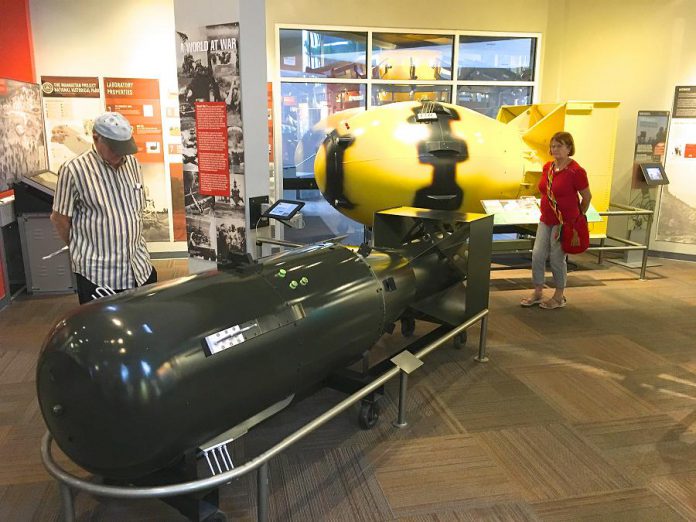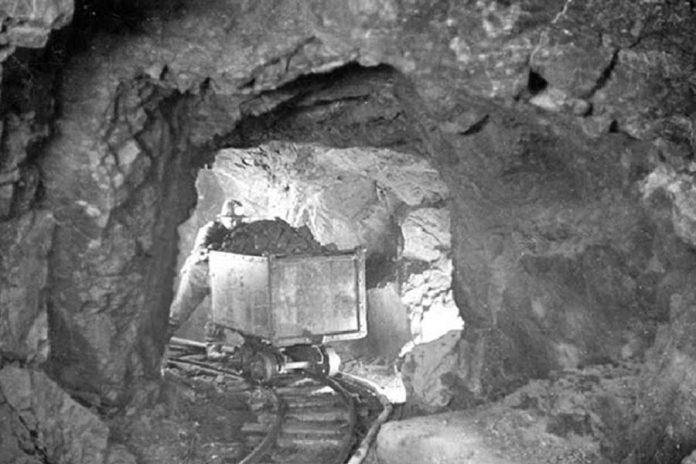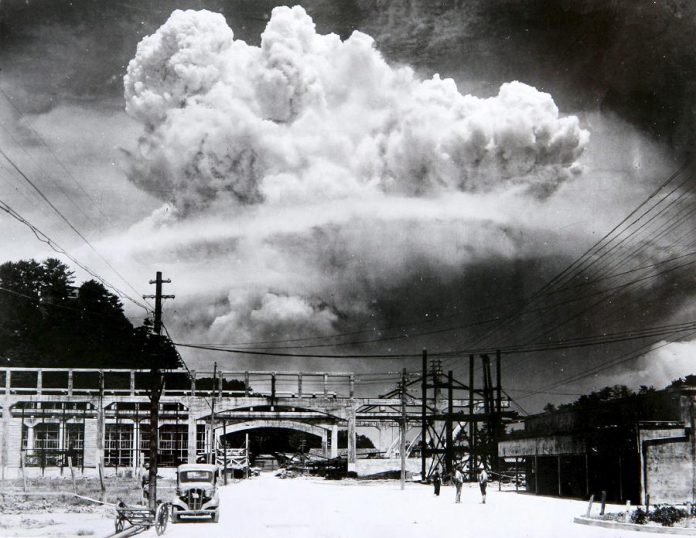
It was a defining moment in the history of war when the United States of America dropped the first atomic bomb on Hiroshima in Japan on August 6, 1945 (and another bomb on Nagasaki three days later), with the two bombs killing at least 129,000 people.
But many Canadians are unaware of the critical role their own country played in the development of the atomic bomb, including mining and refining the uranium used in the Hiroshima bomb. Many Canadians are also unaware that the Sahtu Dene indigenous people in the Northwest Territories, where the uranium was mined, were used as manual labourers to transport the radioactive ore.
This little-known fact led Peterborough filmmaker Peter Blow in 1999 to produce Village of the Widows, a one-hour documentary study of how the Sahtu Dene people have been affected by the mining and transport of the uranium ore used in the atomic bomb.
Evans Contemporary (#2 Banker’s Common, located through Passage des Arts beside 383 Water St. in downtown Peterborough) will be screening the film at 7 p.m. on Thursday, October 26th. Following the free screening, Blow will be available for a Q&A session, along with Japanese photographer Mamoru Tsukada, whose exhibition The Exhausted Sky (which includes images from the Hiroshima nuclear attack) is currently on display at Evans Contemporary.

First broadcast on Canada’s Vision TV network, Blow’s documentary was nominated for Best Political Documentary and was the winner of the VISION 2000 Humanitarian Award at Hot Docs. It was also second prize winner of the Rigoberta Menchu Tum Foundation Award at First Peoples of the Americas Festival in Montreal, and received honourable mentions at Columbus and Yorkton.
On the far eastern shore of Great Bear Lake in the Northwst Territories, about 300 miles north of Yellowknife, lies Port Radium. During World War II, uranium-bearing ore was mined there and transported thousands of kilometres south by river and rail for processing at a uranium milling and refining facility located in Port Hope. From there, it went to the Manhattan Project for eventual use in “Little Boy”, the atomic bomb dropped on Hiroshima.
Port Radium, which has first opened in 1929 as a radium mine, was reopened again as a uranium mine in 1941 to supply the Manhattan Project with uranium ore. The mine, owned and operated by the Eldorado Gold Mining Company until the company was purchased by the Canadian government, employed around 30 Dene men from Déline, a community of about 550 people across the lake on the ore transport route.
The workers, who were never informed of the hazards of radiation and never took any precautions, carried burlap sacks of radioactive uranium ore for transportation to the refining facility. Over the years, the community lost so many of its men to cancer it became known as the Village of Widows. Almost half of the labourers who worked at the mine died from cancer.

In addition, tons of tailings from the mine were dumped directly into the lake and used as landfill, raising concerns about the impact of the mine on the environment and the continued health of the Dene people.
Village of the Widows chronicles the Sahtu Dene’s struggle to come to terms with the mine’s legacy and its lasting impact on their traditional homeland, and concludes with a group of Dene residents travelling from Deline to Hiroshima to meet Japanese bomb survivors.
Blow, who studied at the London International Film School, has worked on well over 100 broadcast television documentaries. He’s been directing documentaries since 1985 and has won several awards, including Best Experimental Award at the 2015 Toronto International Short Film Festival for his 2014 fantasy comedy Ophelia Goes Floating. He also taught film analysis and appreciation at Centennial College from 2011 to 2014.
Blow is currently working with Malcolm Byard and Rob Viscardis on Last Beer at the Pig’s Ear, a documentary about the historic Pig’s Ear Tavern which closed in April 2017.
VIDEO: Village of the Widows promo


























